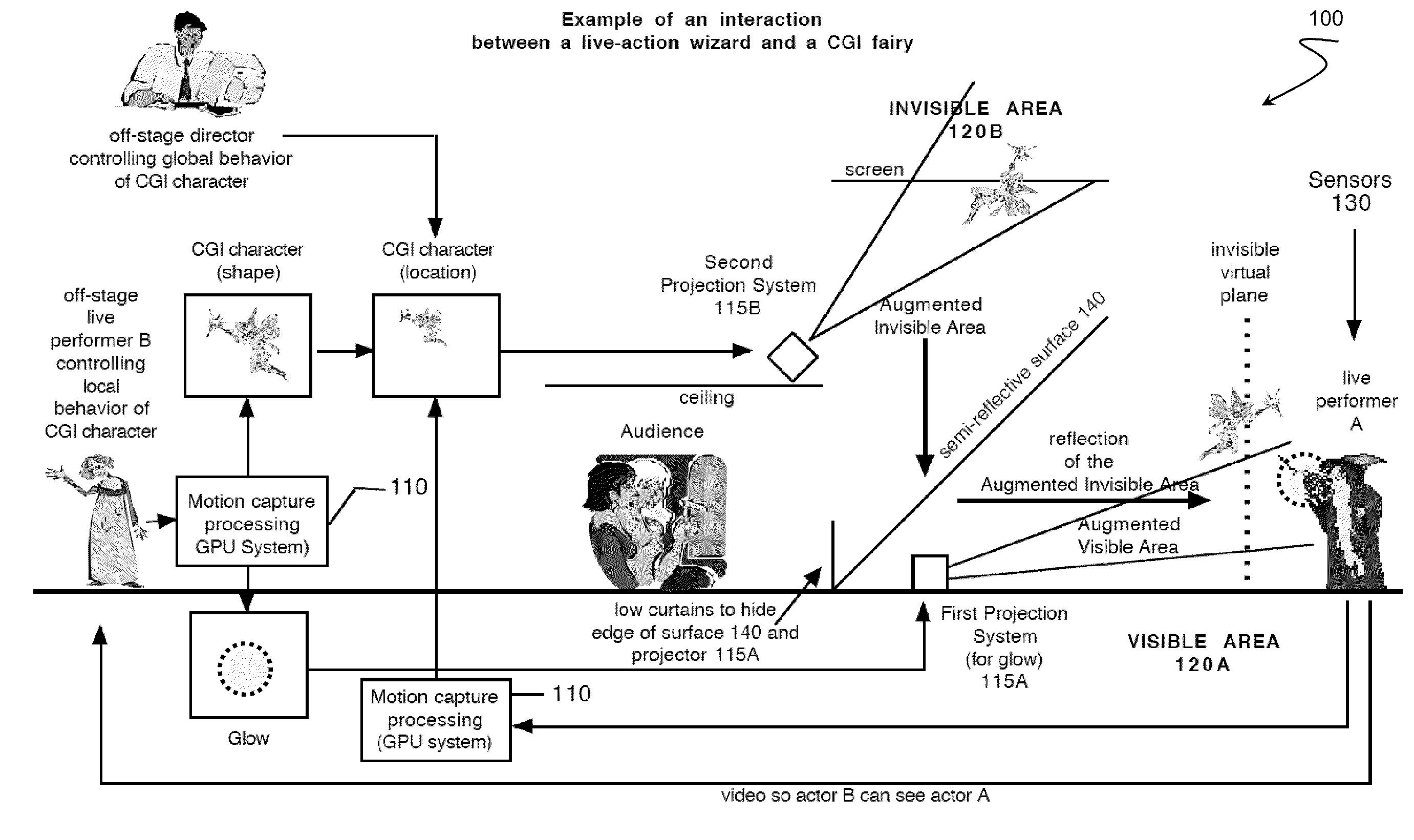Real-Time 3-D Interactions Between Real And Virtual Environments
a technology of virtual environment and real-time 3-d interaction, applied in static indicating devices, instruments, optics, etc., can solve the problems of only allowing the audience (real-world viewers) to see the effects in real-life, and it is almost impossible for the audience (real-world viewers) to know what is real or virtual
- Summary
- Abstract
- Description
- Claims
- Application Information
AI Technical Summary
Benefits of technology
Problems solved by technology
Method used
Image
Examples
example embodiment
[0051]FIG. 1 illustrates an example where a real-life performer playing a wizard is interacting and talking to a CGI tinker bell fairy that “flies” around his head, and lands on his hand.
[0052]The wizard is played by live performer A on stage, the Visible Area 120A. The fairy is a volumetric stereoscopic semi-transparent CGI character controlled off-stage in real-time by performer B. One should appreciate that the wizard represents one type of real-world object, and that any other real-world objects, static or dynamic, can also be used in the contemplated system. Furthermore, the “fairy” represents only one type of digital image that can be projected, but the types of digital images are only limited by the size of the space in which they are to be projected. Naturally the disclosed techniques can be generalized to other real-world objects, settings, or viewers, as well as other digital images.
[0053]The fairy looks like a hologram and can disappear behind the wizard's head, and reapp...
PUM
 Login to View More
Login to View More Abstract
Description
Claims
Application Information
 Login to View More
Login to View More - R&D
- Intellectual Property
- Life Sciences
- Materials
- Tech Scout
- Unparalleled Data Quality
- Higher Quality Content
- 60% Fewer Hallucinations
Browse by: Latest US Patents, China's latest patents, Technical Efficacy Thesaurus, Application Domain, Technology Topic, Popular Technical Reports.
© 2025 PatSnap. All rights reserved.Legal|Privacy policy|Modern Slavery Act Transparency Statement|Sitemap|About US| Contact US: help@patsnap.com


